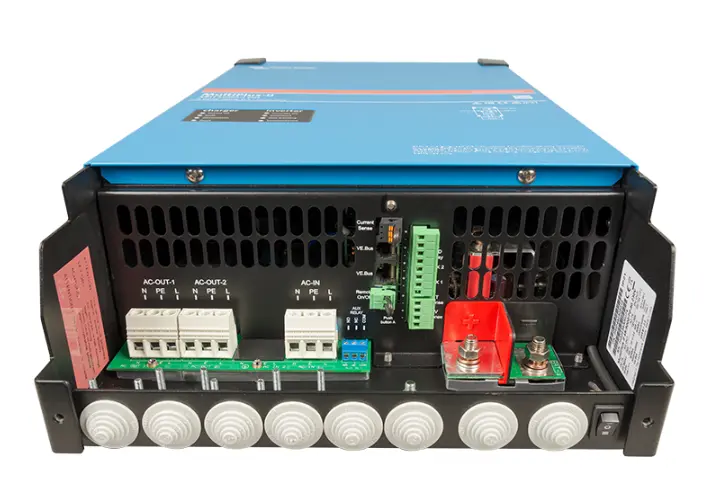It can be a little confusing to how things work with a solar inverter, there are a few types and you may think you plug in something that makes power and its a one way thing. Its not, well not all the time.
When We have wrote about inverters, we will say grid tied, hybrid, grid attached and off grid. This is to try to define the difference in the way that the work.
Grid tied and hybrid inverters work with the grid in parallel, they are dependent on the grid and do not form the or a grid.
The grid is a AC ( alternating wave) type of power, this is called a pure sine wave. The Grid inverter reads the grid and matches the grid so that it is parallel.
Voltage does not make the grid and is not the real power in electrical power, the current is. The current is electrons that flow in the wire at the atomic level. The voltage is what pushes them along.
Why one wire?
With a grid parallel inverter you could say that it injects a little current into the wire. imagine a hoop and someone just tapping it along. The AC current is back and forth so a little is added from the inverter, which will raise the voltage which causes the current to flow to the lower voltage.
As the AC is back and forth the flow is the same back and forth, it is not one way,
AC voltage means the direction of the voltage (and thus the current) reverses periodically, alternating between positive and negative values. The 0V point is where the voltage is neither positive nor negative, and it’s where the waveform crosses the horizontal axis. so you will find that the wave is +120v and -120v 50 times a second. The difference (potential) between the two is 240v which is AC grid power.
The Second or AC Output
This can confuse people and will vary in function from inverter type to another. This is typically for grid tied and hybrids a EPS – this means Emergency power supply. This is a grid forming inverter that will make AC power to your home. Typically 230v AC. It is detached from the grid and cannot be connected to the grid.
This usually works as a pass though, meaning that the relays are closed to the grid while the grid is working, therefore the grid runs anything attached to the EPS or secondary output. When the grid is lost, the relays switch to open so that it is not connected to the grid, but give you an off grid inverter. This can be limited via the pass though or the inverter output which can differ from its normal operation.
Grid attached and off grid have a AC in, this is not used to send power, but to charge and performs like anything that you plug in. The AC out is the main power output, while some will have a pass through which does make wiring a different set of skills. If you have a computer UPS or back up power, then the system works like they do.
There is a mode setting, so UPS which will only work when the grid is down. SUB which keeps the battery charged, uses solar on the house and if the solar is not enough, it makes up for it with the grid supply.
SBU is the same, but will use power from the battery before it takes from the grid.
The issue for what works and blows fuses will depend on what inverter you have, the spec of the pass though or charger output and to if it is a EPS or grid forming inverter.
Some Hybrid inverters will work in the same way as a off grid system. and much of the time a inverter sold as a hybrid is nothing more than a off grid system. The big thing to watch out for is the PVE /PEM Bonding. with the neutral. as TT wont mix which most UK home wiring.

No responses yet